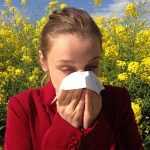As the weather turns colder many of us look forward to pumpkin spice lattes and hot chocolate, but the colder weather is not great for our skin. This is caused by the low humidity levels in the air which causes the air to be very dry, and in turn, removes the moisture from the skin. Cracking, bleeding, and itching skin are just some of the results of cold weather and lack of action to care for the moisture-lacking skin. When it’s time to turn on the furnace, many don’t realize that heat also steals the moisture from the skin through rough cleansers and hot showers.
Even though adding consistent moisture helps, most will need to do more to counteract the results of moisture lacking skin and will keep the skin looking healthy and smooth. At Precision Wellness, we realize that skincare and maintenance of moisture are very important and vital to healthy, youthful, and glowing skin. To reduce these problems, here are some tips from our Precision Wellness expert estheticians to keep your skin healthy and youthful.
Lukewarm Water is Your Friend
Even though hot showers always feel great when it’s cold, it is damaging your skin at the same time. A good time to use lukewarm water is when you’re just washing your face or hands, to avoid taking the oils away from the skin.
Moisturize Right After Every Wash
Your skin consistently needs moisture and moisturizing right after you wash is a great habit to get into. When you moisturize right after showering, it seals in the moisture you received from a lukewarm shower or bath. After you wash, it is good to have a bottle of lotion near you as a reminder to always apply it.
Choose Your Moisturizer Cautiously
Some of the very common moisturizers have petroleum-based ingredients, which can lead your skin to be drier in the winter months. A smart formula that has natural and nourishing ingredients is the best way to go when choosing a moisturizer. Also, an oil-based solution is a better option rather than a water-based one because it helps your skin retain moisture better. Here at Precision Wellness, we can give you more information on ingredients to avoid and ones to seek out.
Weather Protection
Wearing gloves and scarves are a must to protect skin from all of the harsh cold weather events that could happen. However, most forget that even if it’s not summer anymore, sunscreen is still essential to protecting your skin from the sun. While most will think that the summer sun is more damaging, in the winter the sun is just as strong and there is already a lack of moisture so apply sunscreen to any visible skin.
Humidify Your Home
While heating systems are very important in cold winter, they can dry out the air, but a humidifier can remedy this problem. They put moisture back into the air within your home and will then prevent your skin from drying out.
Drink More Water
Even though hot drinks like hot chocolate and tea are great in the winter, don’t forget that your body needs a lot of water because your skin also gets in moisture from the inside of your body. Warm water with lemon can be very effective in aiding in moisture and meets the heated drink requirement while also staying very hydrated at the same time.
Moisturize Every Night
Hands, elbows, feet, and knees tend to have thin skin and will lose moisture quicker than other areas. Using a deep moisturizing balm at night will hold the moisture in overnight and wearing socks after applying this balm will seal in the moisture.
Exfoliate Every Week
Most forget that if the dead cells are too plentiful, the moisture can’t find a way in, so exfoliating every week is essential. An exfoliating mask and body washes are great to use, especially when followed by a hydrating lotion or balm. Here at Precision Wellness, our estheticians specialize in exfoliating facials and body treatments and following with a moisturizer.
Avoid Toxins
Eczema, dermatitis, and psoriasis are all very sensitive to allergens and irritants which can trigger a flare-up of the condition. This is because winter skin is more sensitive, so try and avoid irritating fabrics, use mild cleansers and sensitive skin moisturizers.
Hydrating Foods
Consuming foods high in water will help hydrate your skin from the inside. Apples, oranges, and watermelon are great fruit while, celery, tomatoes, cucumbers, and carrots are great high water vegetables. Consider an omega-3 supplement, or possibly consume more fatty fish, if it works with your doctor’s recommended diet, to give your skin the building blocks it needs to appear smooth and healthy.
Switch Up Your Cleanser
Cleansers can be extremely drying to the skin. It is good to find more than one cleanser that works for your skin type and switch them every couple of months. After cleansing, apply a moisturizer to seal in the moisture.
We hope you found these skincare tips helpful and here at Precision Wellness we are always happy to help you achieve the relaxation or smooth skin you desire.



